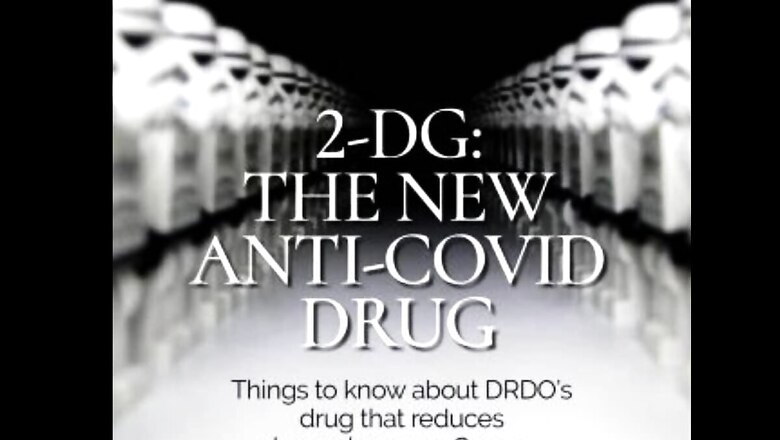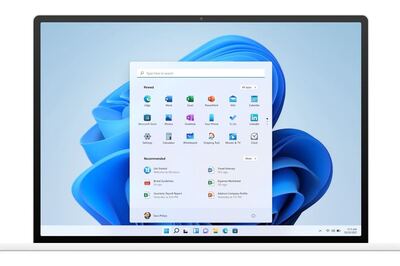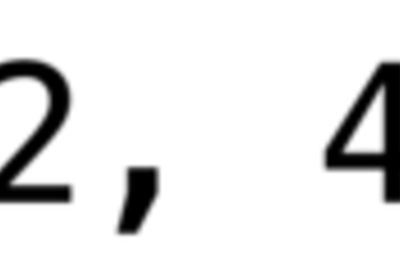Past Use, Safety, Efficacy: An Expert on All You Need to Know about 2-DG Drug in India’s COVID Fight

views
In the fight against COVID-19 pandemic, vaccines and therapies are considered important tools. Scientists have been successful in developing few safe and effective vaccines, but there are not enough drugs that have been found to treat COVID-19.
A new drug, 2-deoxy-D-glucose or 2-DG, has been given license for emergency use by the Drug Controller General of India on May 1, 2021. The drug 2-DG has been developed by the Institute of Nuclear Medicine and Allied Sciences (INMAS), under the Defence Research and Development Organisation (DRDO), in collaboration with Hyderabad-based Dr Reddy’s Laboratories (DRL). It has received approval as adjuvant therapy for moderate to severe COVID-19 patients in India. Although 2-DG will be initially supplied to limited number of hospitals starting mid-May, it expected to be widely available for all hospitals by mid-June.
What is 2-DG and how does it work?
2-DG is a drug derived from glucose. It is known to inhibit a metabolic pathway called glycolysis—the process of glucose formation in the cells—that becomes unregulated in cancer patients. This is the reason why it has been used as adjuvant therapy in cancer. Viruses also thrive on the glucose inside the cells. The inhibition of glycolysis in cells has the potential to reduce or stop their replication. This is the principle on which 2-DG has been considered for COVID-19. Studies have found that 2-DG selectively accumulates in the cells infected by the virus. Once inside those cells, it inhibits the excess glucose production, essential for virus replication, and therefore either slows down or completely stops the viral replication.
Has it been used in the past?
2-DG is not approved as primary treatment for any health condition, in any part of the world. However, it has reportedly been a part of more than 200 clinical trials against various cancers. The scientists at INMAS hypothesized that by interfering with glycolysis, the drug can help reduce the SARS-CoV-2 replication and can thus become effective in COVID-19 management. Thereafter, INMAS took responsibility for testing 2-DG’s efficacy against SARS-CoV-2. The potential role of 2-DG as therapy has also been discussed in a few research papers published from other parts of the world, over the last one year. However, till now, there is no published report stating that 2-DG has been tested for COVID-19 patients in actual hospital settings.
Has it been found safe and effective in clinical trials?
Before any drug can be recommended as therapy, its safety and efficacy have to be proven through clinical trials. Then, it should be licensed by the drug regulatory authority to be marketed. 2-DG has undergone various phases of clinical trials in India. The initial pre-clinical studies were conducted by the INMAS at DRDO and the Centre for Cellular and Molecular Biology (CCMB), Hyderabad, in April 2020. These studies concluded that the molecule (2-DG) works against SARS-CoV-2 and inhibits viral growth.
Thereafter, starting in May 2020, phase-2 clinical trial focused on drug dose ranges and safety. The phas-2 trial was conducted on 110 patients in 17 hospitals between May and October 2020. Then, phase-3 trials were conducted on 220 patients in 27 hospitals between December 2020 and March 2021. As is usual for drug clinical trials, the research institute (INMAS at DRDO) collaborated with a drug manufacturer (Dr Reddy’s Laboratories).
The drug was approved for emergency use in India on COVID-19 patients. The findings from clinical trials are not available in the public domain. On May 8, 2021, an official press release and other statements from various official sources reported that those administered 2-DG in clinical trials demonstrated favourable trend (difference of 2.5 days as median time to achieve normalization of specific vital signs compared to the standard of care [SoC]). It was reported that “a significantly higher proportion of patients improved symptomatically and became free from supplemental oxygen dependence (42% vs 31%) by Day 3 in comparison to SoC”.
So, have we got another therapy for COVID-19?
Till now, there are three proven treatments against COVID-19: Dexamethasone, blood thinners and oxygen supplementation. Rest of the drugs being used in COVID-19 in India are investigational therapies with off-label use. Their role is not proven but may have potential benefit, which is yet to be confirmed. 2-DG has been given approval under a very different sub-group of adjuvant therapy. And that is the key operational word, which needs to be understood.
The primary therapy has a direct role in treatment of a health condition. However, adjuvant therapy may facilitate the treatment but need not be effective on its own. Such mechanisms, once proven conclusively, help but as part of the main treatment. Adjuvant literally means ‘add-on’ and many vaccines carry some adjuvant, which helps in increasing their immunogenicity. It is a long way before the role of 2-DG can be proven conclusively, even as adjuvant therapy.
What are the concerns and next steps?
2-DG has been approved in India; however, no data based on phase-3 clinical trial is available in the public domain or published on pre-print server (peer-reviewed publication in a journal takes longer). However, experts have raised concerns regarding a few aspects of the clinical trials.
The sample size of 220 for phase-3 clinical trial is considered very small. The DRDO has not explained how the sample size was reached. It is widely known that studies with such small sample sizes are usually not helpful in providing information on drug safety and efficacy, conclusively. By now, we know from experience with Remdesivir, plasma therapy and a few other drugs used in COVID-19 management that small-scale trials are usually conflicting and inconclusive. Currently, there is insufficient data in the public domain on the trial design and it is not clearly known what constituted the efficacy outcomes for phase-3 trial. Drug efficacy can be best assessed by large-scale, multi-centric trial, where power of study is high and possibility of ‘beta error’ low. Many also argue that despite the emergency use approval by DCGI, the drug should continue to be investigated in large-scale clinical trials to generate more evidence.
The May 8 press release on the drug has thrice used the term ‘significant’. In clinical research, the word significant does not hold much meaning, unless it means ‘statistically significant’, which means p-value of What is the way forward?
The licensing of the drug is a good start. However, there is a definitive need for a well-designed, large-scale, multi-centric, randomized-controlled trial for the drug. Also, there is a need to manage public expectations and it should be clearly communicated to people that 2-DG is an adjuvant therapy and more evidence is needed. In other words, 2-DG is supplemental to the standard of care—the treatment guidelines suggested by ICMR and MoHFW for COVID-19 management in India. Although the drug is unlikely to be available in the open market (at least for some time), it should be ensured that people do not start demanding the drug, lining up for its purchase and stocking.
2-DG may not be the drug the world is looking for COVID-19 management (as yet); however, it gives us hope that the world could be on the right path to finding a cure.
Read all the Latest News, Breaking News and Coronavirus News here. Follow us on Facebook, Twitter and Telegram.




















Comments
0 comment